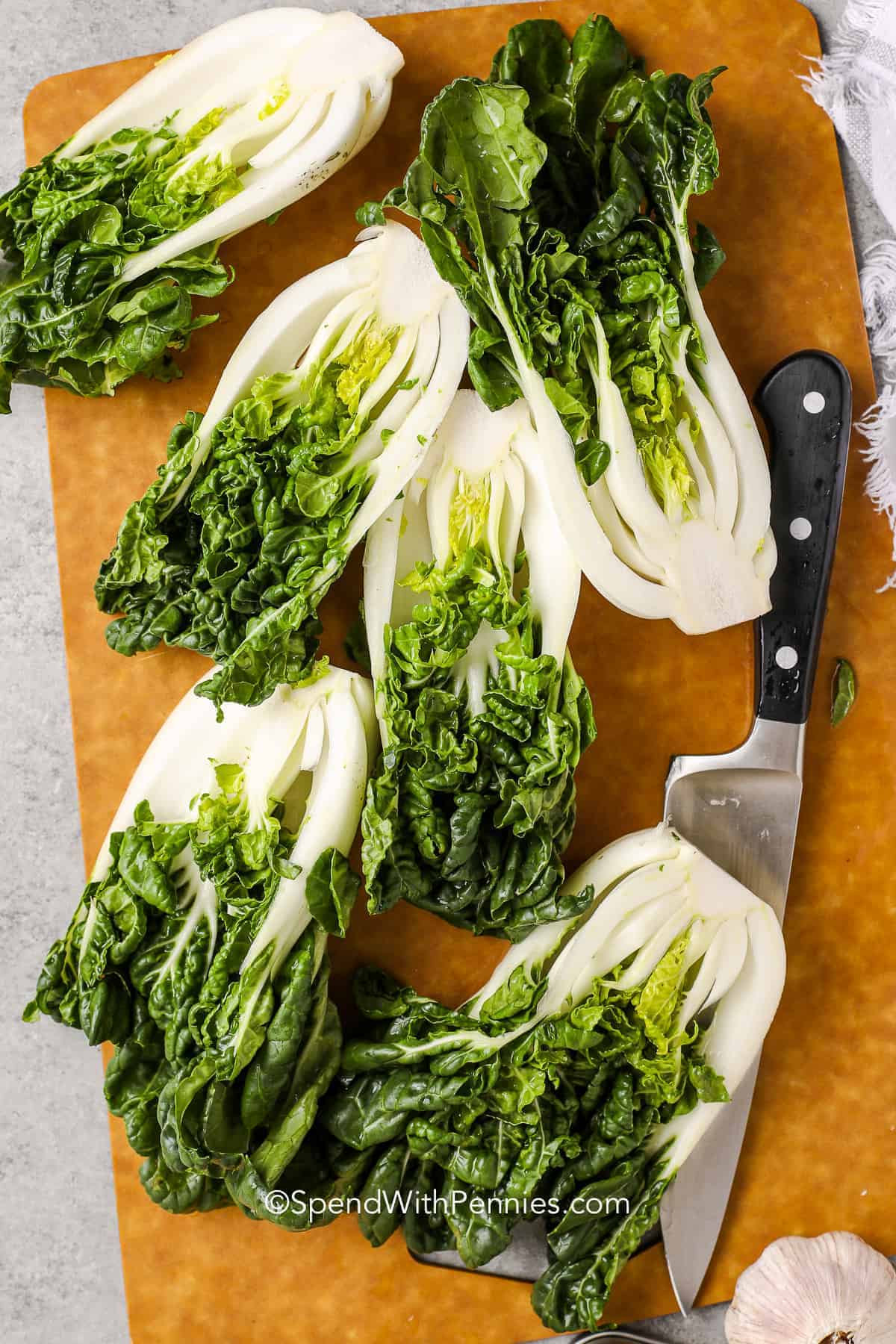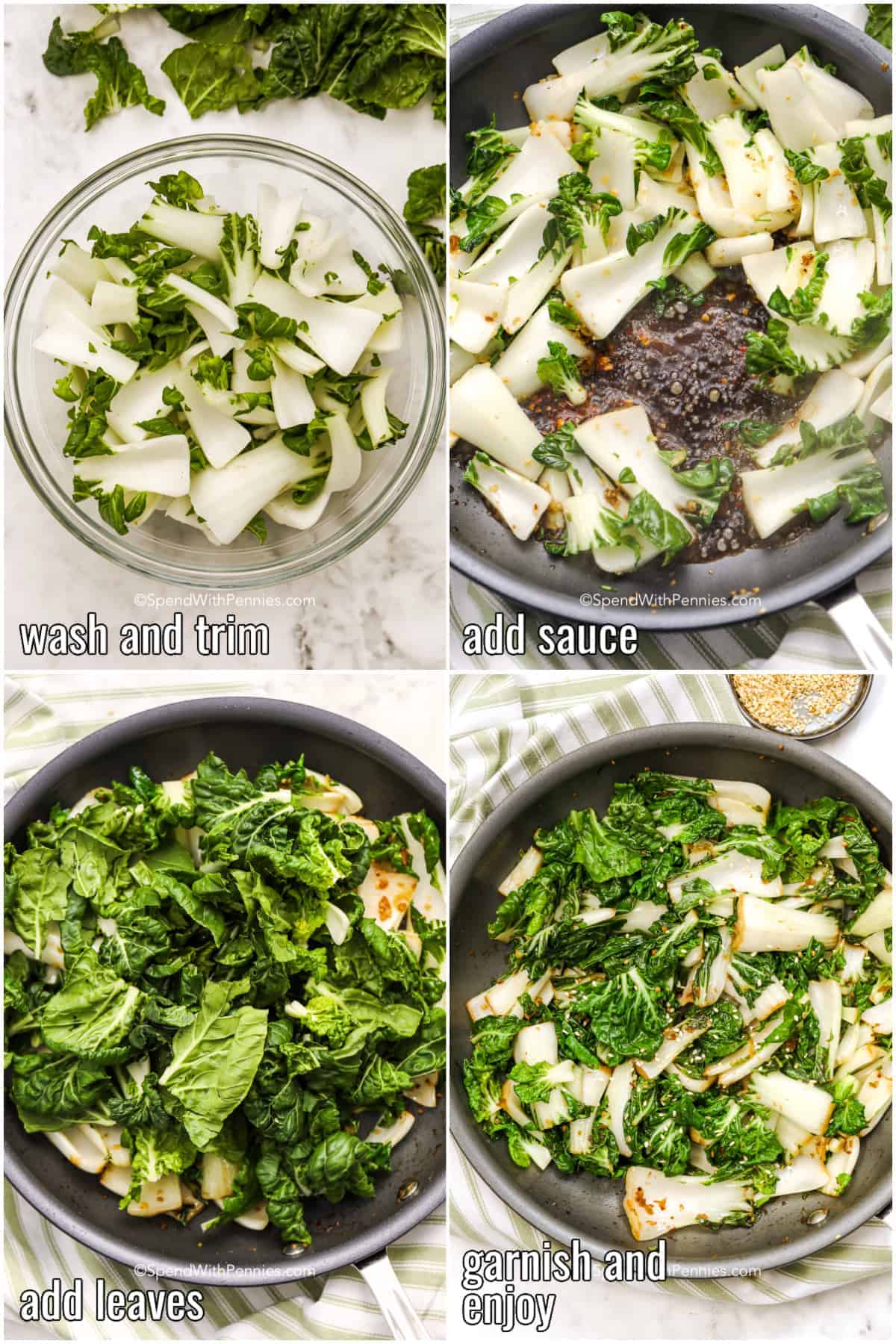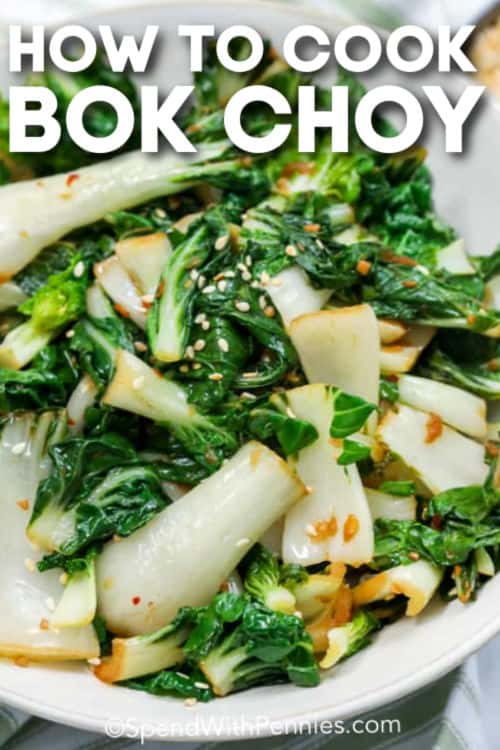Preparing this dish takes only minutes, and makes a marvelous side with any lunch or dinner. Serve with fried rice with take-out style sweet and sour chicken or Mongolian Beef!
Bok choy is one of my favorite stir fry veggies. This delicious cabbage was introduced to North America during the gold rush in the late 19th century.
How to Choose Bok Choy
Bok choy should be firm and waxy with no brown spots. It is sometimes known as pak-choi and while there are many varieties, it most often is seen in two different sizes in North American grocery stores.
A full-grown head of bok choy is about a foot long, with thick white ribs and dark green leaves along the top edges. Baby bok choy (photographed here) is about half that size and has a milder flavor than many people prefer over the more pungent adult version.
Whatever the name or size, it’s always versatile, easy to prep, and remains a staple of Chinese cuisine; it’s a stir-fry workhorse. What does Bok Choy taste like? It has a mild, peppery flavor that makes it suitable for many dishes or salads. Chop or grate it raw for salads or slaw, or, keep it simple and cut in half, brush with oil, and grill. The great thing about this vegetable is that it retains its crunchiness, even when cooked. Flavors that pair well with bok choy include minced garlic, soy sauce, ginger, red pepper flakes or chili paste, sesame oil, lemon juice, tamari.
How to Cut Bok Choy
Clean Well! The stalks can often have dirt or grit at the base of the stem so be sure to remove them and rinse well. If cutting in half lengthwise (photo above) run cold water through the stems making sure to remove any dirt or grit. Bok choy leaves cook faster than the crisp ribs (stems) so they can be cut to cook separately. If using baby bok choy, the leaves and ribs can be cooked together.
Baby Bok Choy can be cut in half lengthwise and grilled or cooked on the stove. Cutting this way makes for a pretty presentation and a crisp ribs with tender leaves. You can also separate baby bok choy by pulling the ribs off and rinsing and then cutting the leaves off to cook separately in a pan. For larger bok choy, I prefer to separate the leaves from the stalks and cook them separately.
For salads, baby bok choy can be shredded and enjoyed raw.
How to Cook Bok Choy
This veggie is quick and easy to cook and comes together in no time flat. Sprinkle with toasted sesame seeds and serve.
What to Serve With It
Bring out the best in bok choy by serving it with ramen noodles, or Jasmine rice or adding it to any stir fry recipe. Rice or udon noodles make excellent accompaniments. Serve it next to steamed fish, or steak bites. If you’re in the mood for something more substantial, consider sautéing it with teriyaki chicken.
The combination of soy sauce, toasted sesame oil, ginger, garlic, and chili flakes are the perfect complement to tender-crisp bok choy.
Storing and Reheating the Leftovers
Leftovers will keep in a tightly covered container in the refrigerator for up to four days, or in the freezer for up to four months. Reheat on low or medium in the microwave or stovetop until heated through. Don’t overdo the heat or your bok choy could get mushy and overdone.
Take-Out At Home
Sweet and Sour Pork – a perfect balance of sweet & sour Chicken Chow Mein – ready in 30 minutes! Beef and Broccoli – sweet, savory & spicy! Crispy Homemade Egg Roll – with an easy sesame sauce! Chicken Lo Mein – a classic take-out favorite Sesame Air Fryer Green Beans – ready in 15 minutes
© SpendWithPennies.com. Content and photographs are copyright protected. Sharing of this recipe is both encouraged and appreciated. Copying and/or pasting full recipes to any social media is strictly prohibited. Please view my photo use policy here.











